Now, thank you for your patience. Following “What I Found in TGD8 During a Holiday Workday – Peeking into the ‘Cracks’ of Everyday Life: Part 1”, we will now present Part 2. As always, next to my keyboard is the now-familiar lukewarm coffee, belonging to the Negolove team of SKOOTAGAMES, Mob.
In Part 1, we introduced three works that evoke a slight chill down the spine or strongly stimulate curiosity, emerging from the “cracks” hidden in everyday life. Despite the short playtime, each left a significant impact and posed profound questions that lingered in my mind.
This Part 2 will focus on game titles that cannot simply be dismissed with the word “interesting,” but rather provide moments that make you reflect on your own heart after playing. For example, a story set in a post-apocalyptic world depicted in pixel art. Or conversations with “non-human beings” in a late-night diner. And even a game that I unexpectedly resumed playing… I would like to unravel a bit why these experiences captured my heart so deeply and made me feel that they were “more than just interesting.”
Each of these works left me with unforgettable “emotional movements” that I felt as both an exhibitor and a game enthusiast amidst the hustle and bustle of Golden Week. Now, let’s quickly explore the first work of Part 2 and investigate its “reason.”
In a World Without People: A Poem Embedded in the “Density” of One Hour Collected in a Silent World
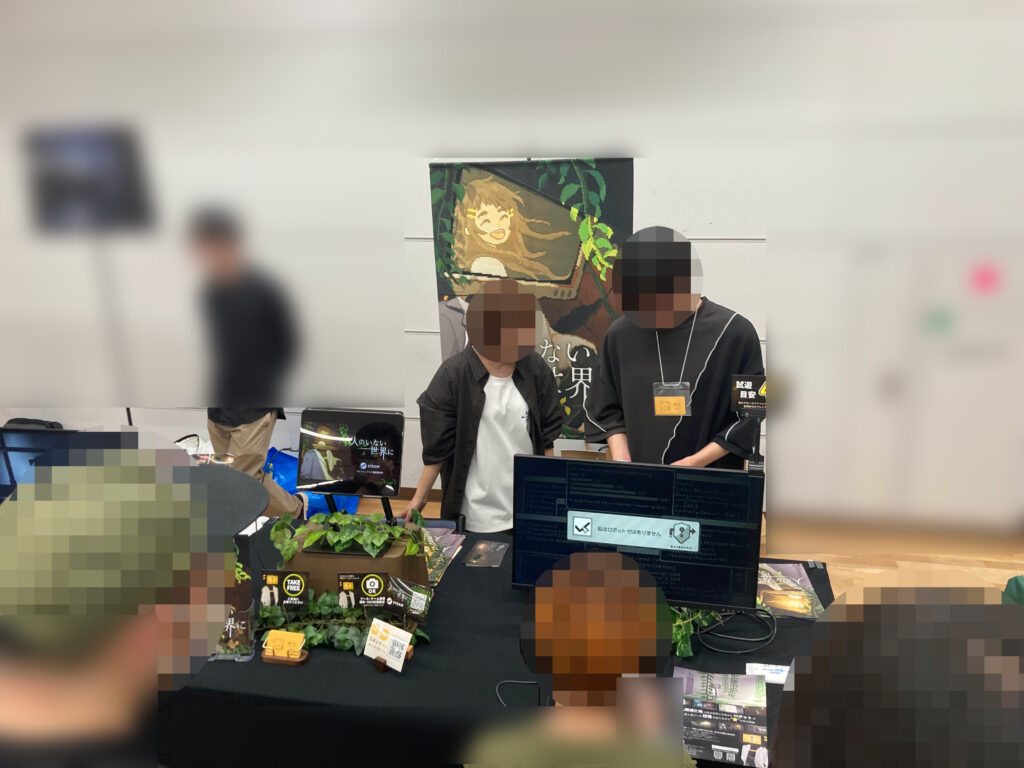
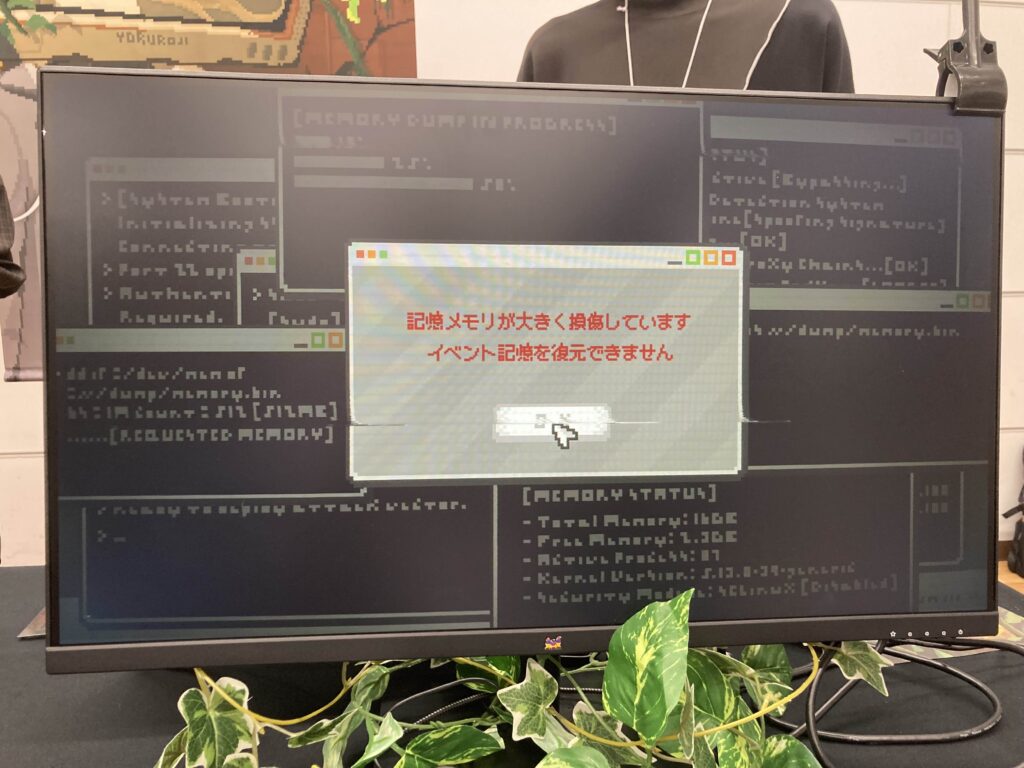
Kicking off Part 2 is a work that made me gasp, “This is…!” at this year’s Tokyo Game Dungeon 8, “In a World Without People.” Developed individually, this game has a playtime of only about 5 minutes. However, the fragments of the world I experienced in that short time undoubtedly confronted me with something that was “more than just interesting.”
This work is an adventure game set in a post-apocalyptic world, depicted in pixel art that carries a sense of melancholy. The character I controlled during the demo has a head resembling an old computer and is humanoid. She (or he?) collects lost memory data from computers that look similar to her own, reliving fragments of days spent with humans. In the demo version, the story only hinted at the beginning, stating “this is where we stop for now” after recovering a single memory.
However, what strongly captured my heart about this game was its overwhelming “density of play.” From the character’s delicate movements to the careful screen transitions, and even the layout and feel of the UI, each smallest unit that composes the game gives the impression of being crafted with astonishing sincerity and robustness. It wouldn’t be an exaggeration to say, “I was allowed to play just the first five minutes of a fully completed product.” After the demo, I couldn’t help but ask the developer, “Excuse me, but you are a professional, right…?” and I remember being doubly surprised to learn that it was developed by just one person.
What further surprised me was the statement that “the total playtime is expected to be about one hour.” An indie game aiming for release on Steam is setting a goal of one hour for playtime. While this fact might be perceived as “lacking in volume,” after experiencing those dense five minutes, it instead sparked an expectation of how much scenery and emotion could be packed into that one hour.
In recent times, many indie games often use the length of playtime as a selling point, but this work’s approach of competing on “density of experience per hour” feels very refreshing and, above all, conveys a strong will from the creators. It is not just a long story, but rather a dense hour that aims to deliver a poetic experience, where each line is etched into the heart. This quiet yet firm passion reflects the desire to provide players with such an experience. In this brief encounter, I certainly felt the “thoughts” of the developer.
After Work at That Shop: Conversations Over a “Drink” with Non-Human Beings at Midnight
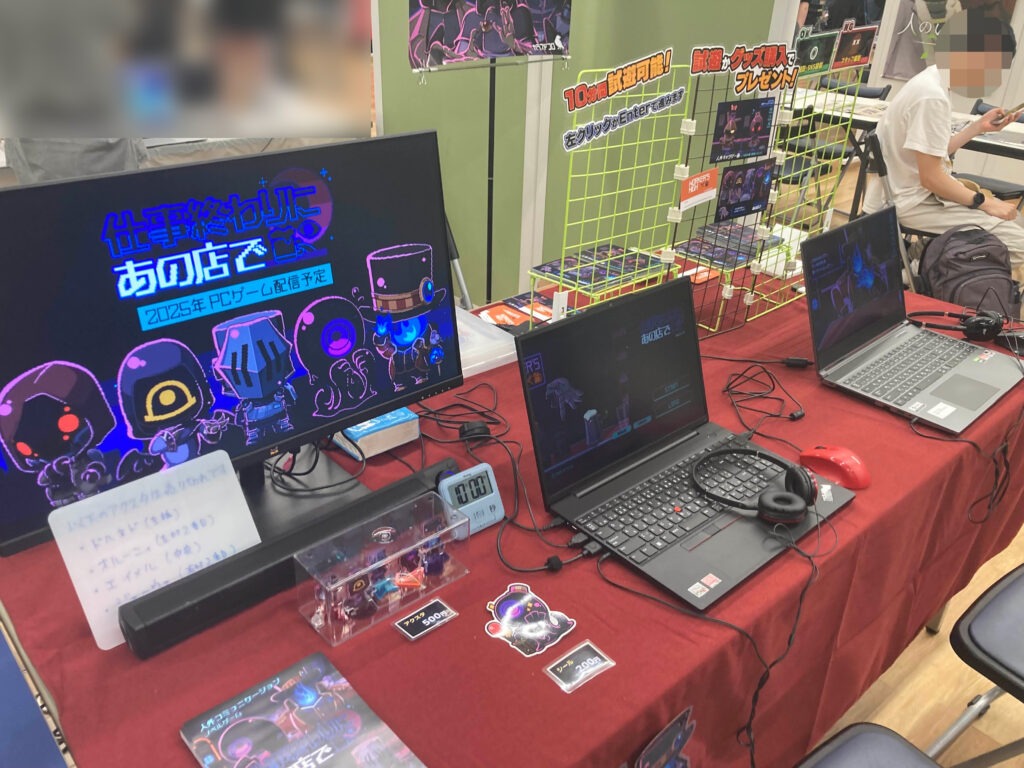
Next, I would like to introduce the novel game ‘After Work at That Shop’ created by Karasumaguro. As the title suggests, the protagonist, exhausted from work, casually stops by their favorite shop late at night, where they meet unique “non-human” customers and engage in conversations… This work offers a rather unusual form of communication. During the trial play, I was able to choose one character from five potential targets and spend about ten minutes with them.
I chose a character named ‘Oruni’, who wore a robe pulled down low. With a black, spherical face and a single eye, along with hands resembling bird claws, this customer made quite an impression. According to the official description, they are “a suspicious regular who seems oddly concerned about you,” and that was indeed the case. There are many other attractive non-human characters, making it both exciting and challenging to choose who to sit with. Oruni actively spoke to me, the somewhat cautious protagonist (myself), but their overly familiar demeanor made me think, “Is there something behind this…?” and I found myself desperately trying to uncover the true meaning behind Oruni’s words. Perhaps I was the most suspicious one after all (laughs).
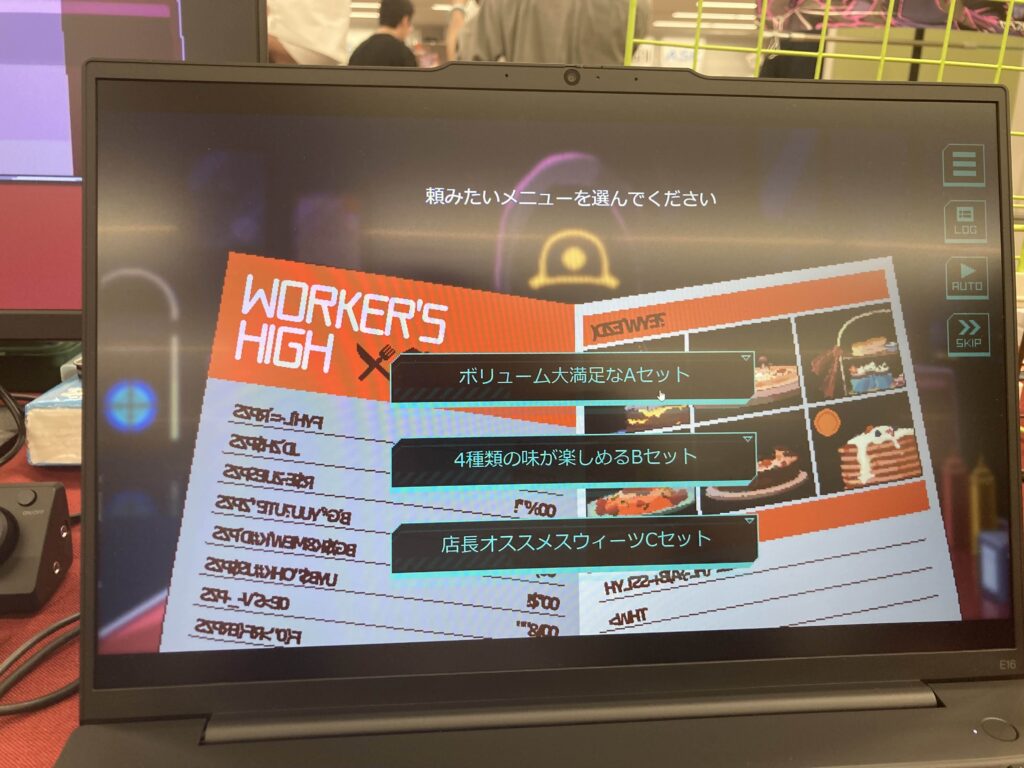
Everything looks delicious.
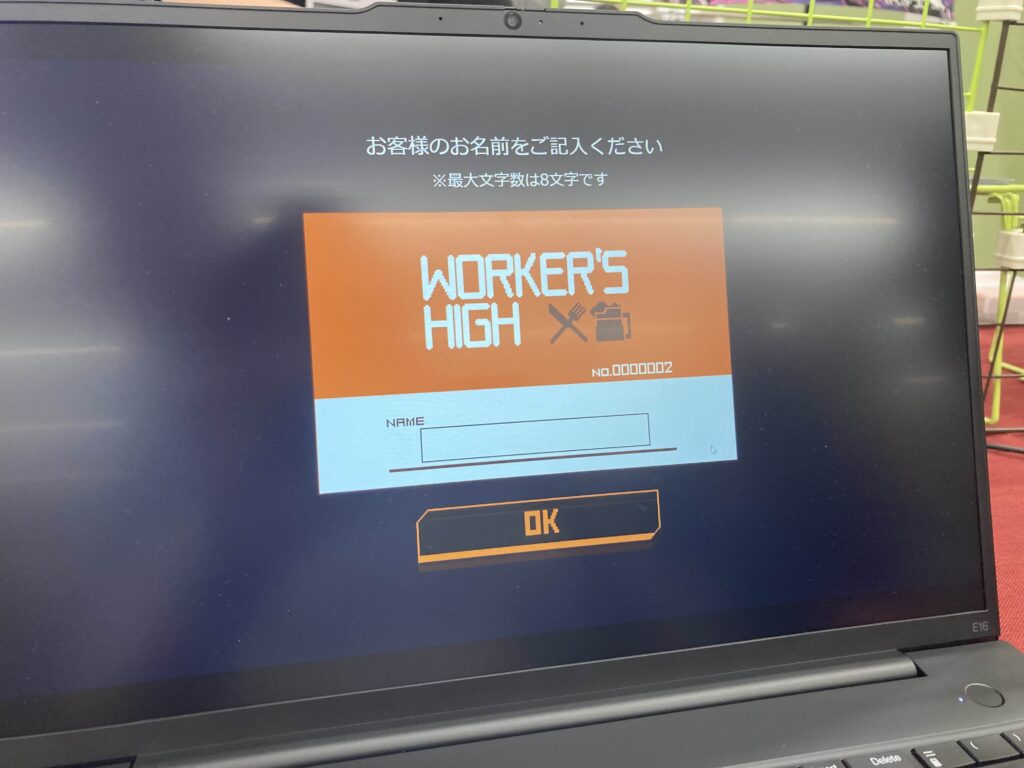
Through this game, I encountered the genre of “non-human” for the first time in a serious way, and I certainly felt that it has a unique charm. It allows us to temporarily remove the human filters of gender and age that we unconsciously apply when viewing characters, and face the existence itself. The words of the developer, who said, “I love non-humans,” were also impressive, and that pure feeling of “love” conveyed a part of the charm of this genre even to someone like me, who is unfamiliar with it, making me think, “I want to know more.”
Additionally, the sound design of this work is very meticulous, beautifully creating the calm atmosphere of a late-night shop. I was particularly impressed by how the sound of placing dishes differed slightly between the waiter and myself when the waiter brought the food. This attention to detail is a great example of how it enhances the reality of the game world.
This ‘After Work at That Shop’ is actually already available for free on Booth. If you’re interested in a night of conversation with “somewhat unsettling yet charming” beings, why not experience it this weekend?

The Children’s Garden: A “Reunion” Encountered at the River of Souls, and the Passion of Indie Games
Now, concluding the second part, I want to share a work that has a special story of reunion, which made me reconsider the significance of this “Tokyo Game Dungeon 8” event: ‘The Children’s Garden’. This game was previously introduced in my report, but this time it has returned with even more charm and power. The playtime is about 10 minutes. In addition to the previous content, there were more stages and additional information that deepened the understanding of the game’s background.
If you are interested in this work, I encourage you to look for it, but to reiterate, it is a powerful and ironic piece that depicts “hell” itself, using the motif of the folklore of the “River of Souls” through the guise of innocent educational toys. The theme, which contrasts with the cute visuals, clings to your heart as an indescribable “creepiness” throughout the gameplay, and I felt that this sensation was even more sharpened this time.
This time, the reason I picked up the ‘Children’s Garden’ again is not just the joy of reuniting with a game I covered in the past. After several months, this game has steadily enriched its content and is making strong strides toward its upcoming release. When I felt the passion and effort of the developers behind it, something was strongly stirred within me. Unfortunately, in the world of indie games, not all works reach completion smoothly. This is a painful reality that I can deeply understand as someone who also struggles to create “something.”
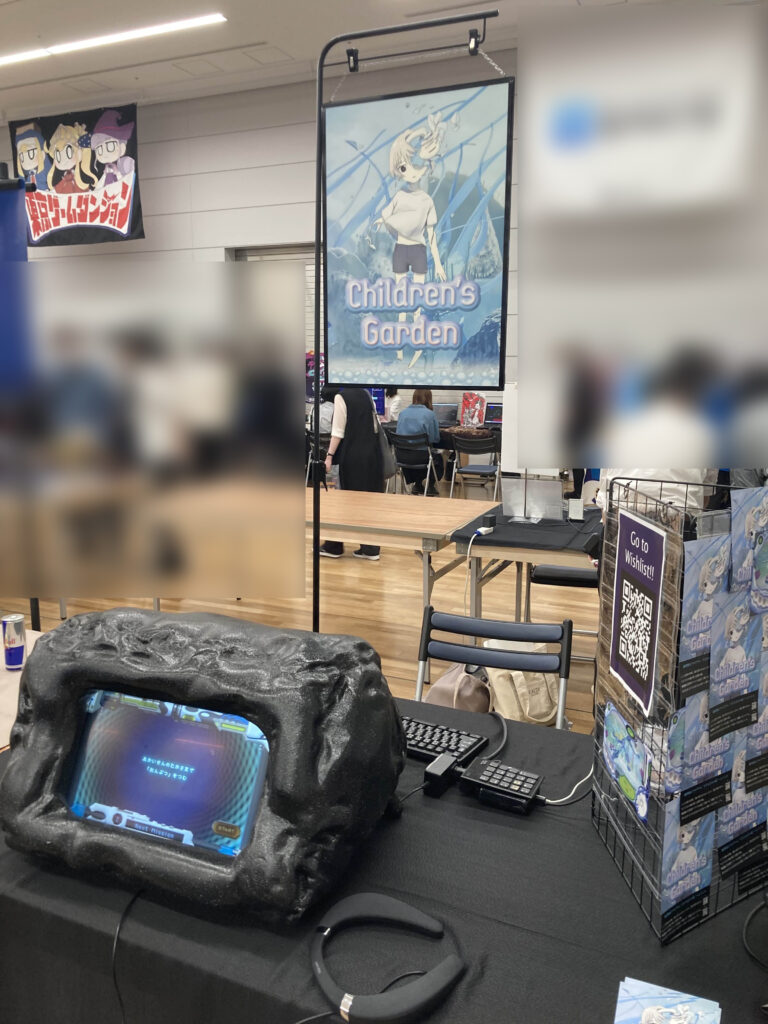
the game’s content had evolved remarkably.
That is why, reuniting with a work like this one that has overcome difficulties and returned more attractive was particularly moving. The Tokyo Game Dungeon, described by the organizers as an “event that sells deadlines to developers,” serves as a solid driving force for creators and generates a wonderful cycle for bringing works to the world. I felt that this ‘Children’s Garden’ exemplified one beautiful instance of that. This is not just a story about a game nearing completion, but a small yet certain light of hope for all creators who struggle daily in the world of indie games.
Of course, the quality of the game itself has been further refined since my previous experience. The unique sound, a mix of children’s innocent voices and dissonance, deepens the irony inherent in this work. In this world where cuteness and cruelty coexist, what will players ultimately feel? The release of the final product, which will confirm that answer, is something I am truly looking forward to, and this reunion has instilled that hope in me.
Tokyo Game Dungeon 8: The “Heat” and “Questions” That Remained in Our Hearts After the Festival
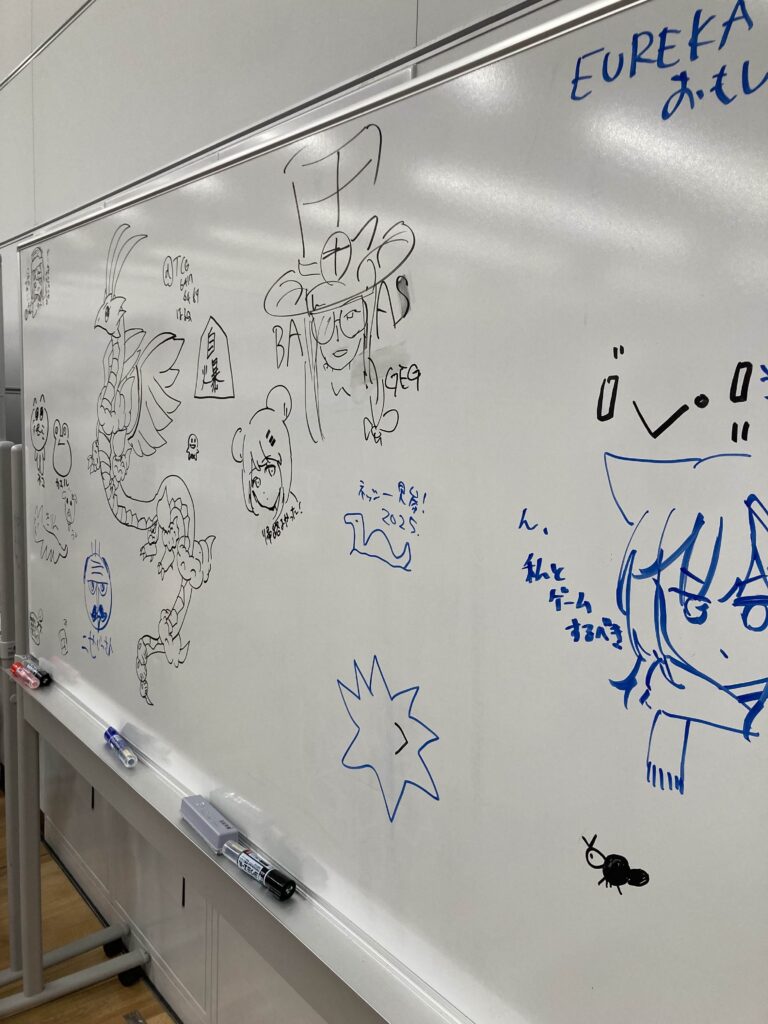
Now, the report on “Tokyo Game Dungeon 8,” which we have delivered in two parts, 【Part 1】 and 【Part 2】, is finally reaching its conclusion. Participating as an exhibitor for the first time was a series of joyful screams, but the excitement of that venue and the many unique games left a special impression on my heart.
In a different form from the games introduced in 【Part 1】, the titles delivered in 【Part 2】, ‘In a World Without People’, ‘After Work at That Store’, and ‘The Children’s Garden’, each deeply shook my heart, providing a tangible sense of “not just being interesting” and many clues for contemplation. The pure energy of the creators’ “love,” the warmth of exchanging words, and the hope given by the continuous growth of a single work… I feel that these were the most precious “souvenirs” I received at this Game Dungeon 8.
As I walked around the venue as an exhibitor, exchanging brief words with many visitors and developers, I felt the boundless potential of the indie game world and the pure enthusiasm of the people gathered there. I was able to experience once again how this place, “Tokyo Game Dungeon,” transforms such enthusiasm into a greater wave, creating a wonderful cycle that brings new talents into the world.
Reflecting on these festival-like two days filled with many inspirations and a few personal assignments (mainly regarding the progress of Negolove… but that’s another story), I wonder what kind of games I will encounter and what new “questions” I will hold in my heart the next time I feel this excitement.
Looking forward to it, I should be heading home as it’s about time. Until next time.
